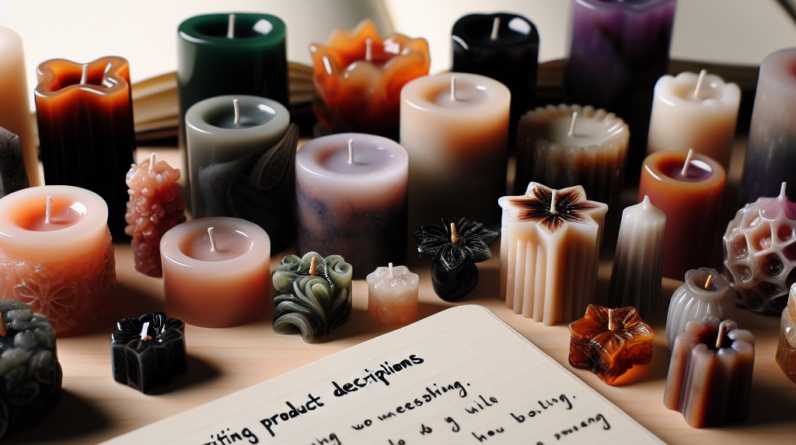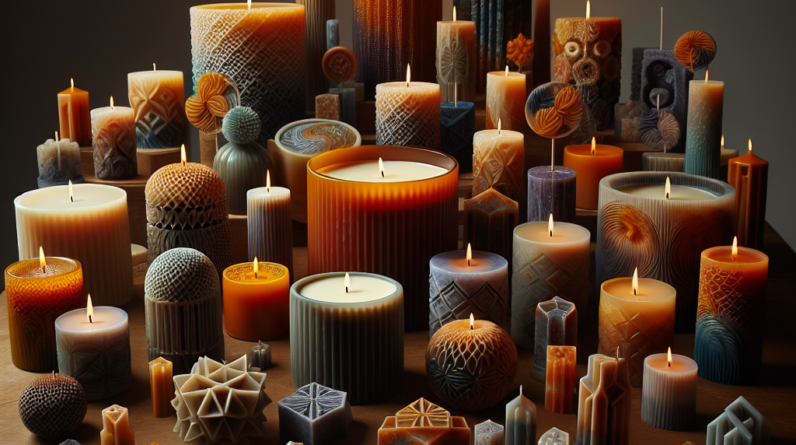
Identify Your Target Audience
Understanding Their Preferences
First things first, I always believe that knowing your audience can make a world of difference. When writing about your resin candles, think about who’s likely to be interested. Are they home decor aficionados? Eco-conscious consumers? Maybe they’re into unique, artisanal products. These details shape how we present our description. The more tailored you can be, the more likely they are to feel a connection to your candles.
To get to know my audience better, I often engage with them through social media or surveys. It’s fascinating how much feedback you can receive just by asking. Pay attention to their favorite scents or styles. This intel allows you to weave their preferences into your product descriptions, making each piece resonate with them.
Once I have a solid understanding of my audience, I can craft a description that speaks directly to them. It’s all about creating that emotional bridge. For example, if my target is into sustainability, I’d highlight the eco-friendly materials in my candles. This connection is what makes a description stand out!
Highlight the Unique Features of Your Candles
Crafting a Compelling Narrative
Let me tell you, one of the best parts about selling resin candles is all the creativity involved. Every single candle can tell a story. I always focus on the unique features—whether it’s the mesmerizing colors, the intricate shapes, or the scent blends. This is gold for your product description. When buyers know what sets your candles apart, they’re more likely to hit that ‘add to cart’ button.
For instance, if I’ve made a candle that resembles a serene ocean wave, I’d describe how the colors mimic the sea’s hues and evoke calmness. Including sensory details helps to transport the reader straight to that ocean view, making them visualize lighting the candle while lounging by the shore.
Don’t shy away from taking pride in what makes your candles stand out. Mentioning the handmade aspect, the exquisite craftsmanship, or the rare materials can all boost their appeal. People love knowing they’re buying something special. It’s all about showcasing that unique narrative in a way that feels genuine.
Use Descriptive Language
Painting a Picture with Words
Let’s chat about language. It’s vital to use descriptive, vivid language that stirs emotions and paints a picture in the customer’s mind. Think about it—how would you describe the warm glow of a resin candle lit in a cozy setting? For me, it’s about making the customer feel something. If they can picture themselves relaxing with my candle, I’ve already won half the battle!
I often incorporate words that evoke the senses—like “soft flicker,” “pleasant aroma,” or “vibrant colors.” These verbal cues are crucial because they do more than just describe; they create an entire atmosphere. Pairing these descriptions with relatable scenarios—like a bubble bath or a romantic dinner—can transport customers right into the experience.
Furthermore, avoid jargon-heavy language that might confuse potential buyers. Instead, aim for clarity and warmth. You want your audience to feel comfortable and absorbed in your description. Think about how you’d talk to a friend about a great new candle—you’d keep it genuine and enthusiastic, right?
Incorporate Customer Testimonials
The Power of Social Proof
Now, let’s get into something I absolutely swear by—customer testimonials. There’s nothing quite like hearing from someone else how much they love your product. It adds that extra layer of trust and authenticity. When I write product descriptions, I often include snippets of glowing reviews. It proves that real people are loving my resin candles.
Consider how these testimonials fit into your descriptions. Perhaps a customer raved about how one candle transformed their living room vibe. Sharing this kind of feedback not only helps potential buyers envision the product’s impact but also builds confidence in their purchase decision.
Not every testimonial has to be a glowing five-star review. Sometimes, a candid feedback point can resonate deeply with a potential buyer. Authenticity is key! I find that when customers see a real-life application or benefit from a product, it nudges them closer to making that purchase.
Provide Practical Information
Answering Queries Before They Arise
Lastly, but by no means least, let’s cover the nitty-gritty—practical information. Customers want to know how to care for their new resin candles, how long they last, and if there are any safety tips. I always make sure to include these essential details in my product descriptions. It shows that I care about their experience even after they hit ‘buy.’
For instance, I might mention that my resin candles are designed to burn evenly, or how to avoid overheating and prolong their life. This kind of practical advice can significantly enhance customer satisfaction. They’ll feel informed and confident in their purchase.
Also, think about listing features like size, burn time, and scent throw. Customers appreciate knowing exactly what they’re getting. I find that providing this information in an engaging way—perhaps turning it into a whimsical bullet point list or fitting it into a story—makes it far more enjoyable to read!
Frequently Asked Questions
1. Why are engaging product descriptions important?
Engaging product descriptions help you connect with your audience, highlighting what makes your candles unique and prompting emotional responses that lead to purchases.
2. How can customer testimonials be incorporated into product descriptions?
You can include snippets of positive reviews within the descriptions to provide social proof and validate the quality of your product.
3. What descriptive language works well for resin candles?
Use words that evoke the senses such as “warm glow,” “captivating aroma,” and “beautifully crafted.” This helps potential buyers visualize and feel the experience.
4. How often should I update my product descriptions?
Regularly updating descriptions is a good practice, especially if new features are added or to reflect seasonal changes and buyer feedback.
5. Can I use humor in my product descriptions?
Absolutely! If it aligns with your brand voice, humor can make your descriptions more relatable and enjoyable for customers.






